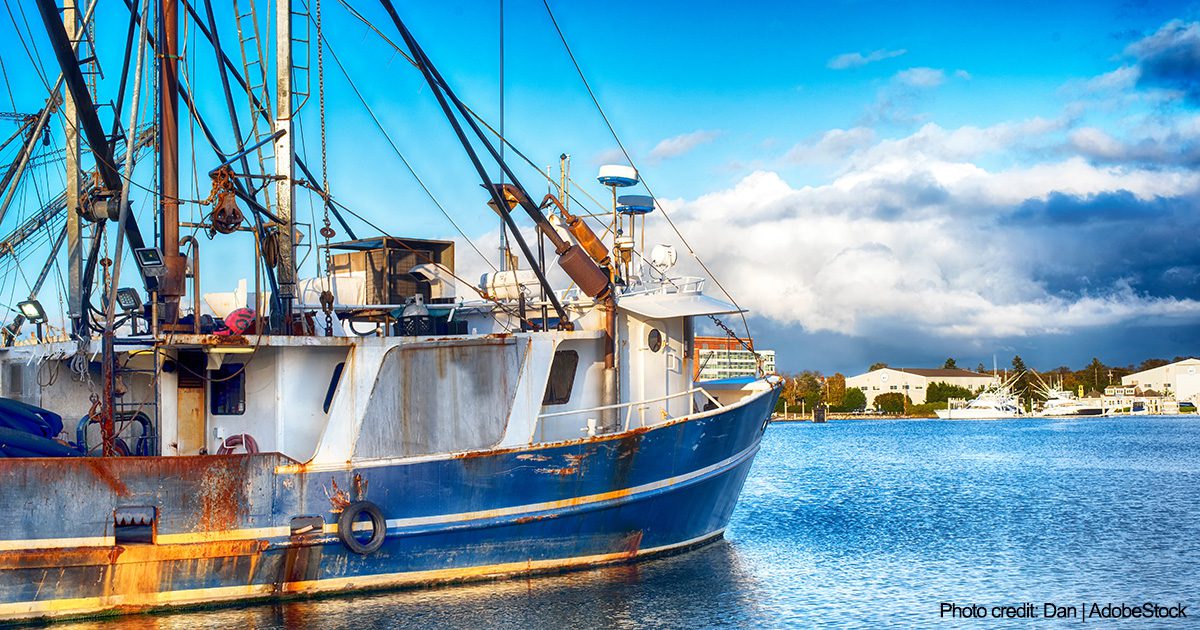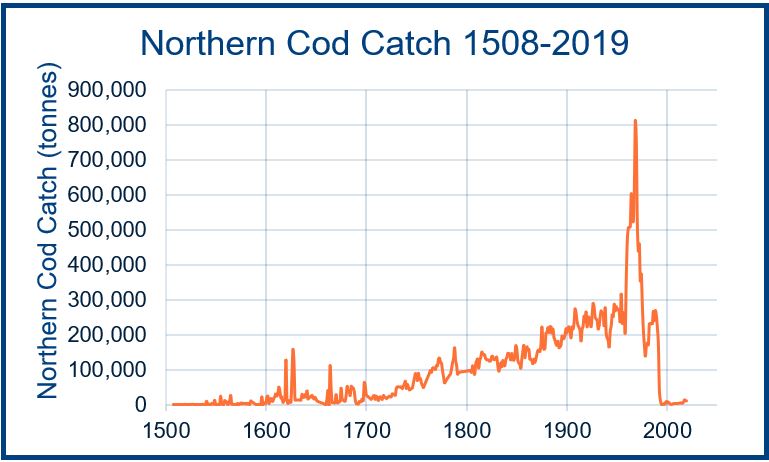
Jan 18, 2023 Finally, Some Good News about Cod
In June 2020, WellBeing News included an article on sustainable fisheries that mentioned the 1990 collapse of the North Atlantic cod fishery off the coasts of the USA and Canada. A moratorium on catching cod was established in 1992 with the hope that the cod population would quickly recover once it was no longer subjected to heavy fishing pressure. But thirty years later, the cod population has still not recovered. The chart below shows the total annual landings of New England and Canadian cod since 1508, as estimated by a group of fishery scientists from Europe and the University of British Columbia. According to the authors, the collapse of the North Atlantic cod fishery off the Canadian and New England coasts “presents the most spectacular case of an exploited stock” that was presumed to be well-managed. The fishery generated average annual catches of 100,000 to 200,000 tonnes from the 18th century to the 1950s, peaking at 810,000 tonnes in 1968, followed by its dramatic collapse and closure 24 years later.

A fishery’s sustainability depends on the recruitment of new fish every year minus the mortality of the fish due to fishing pressures and natural mortality. Over the years, many marine fisheries have experienced dramatic collapses. Fishery scientists have steadily developed better techniques to estimate the spawning biomass of a stock and its overall productivity expressed as the Maximum Sustainable Yield (MSY). Simultaneously, fishing technology has become more efficient. These efficiencies include using sonar to find the fish, improved catching mechanisms, and bigger boats with more extensive storage facilities allowing boats to stay at sea longer. So older methods of estimating the biomass of the fishery (such as tracking the catch per total effort) no longer provide an accurate estimate of the biomass of the fishery. Fishery managers, such as the Pacific Fishery Management Council, who manage the US West Coast sardine fishery, typically set catch limits at around 16% of the estimated fishery biomass. However, such management decisions are usually heavily contested, with the fishermen arguing for higher catches and conservationists pushing for lower harvests. The sardine fishery has been characterized by periodic boom and bust cycles and provided the background for the Steinbeck novel, Cannery Row.
The development of better tools to assess the biomass of a particular fishery is one possible way out of the endless fisherman-conservationist conflict. A New England fisheries scientist, Kevin Stokesbury, at the University of Massachusetts and his students developed an ingenious method to assess the scallop population off Massachusetts. His team demonstrated that there were many more scallops than the fishery managers had estimated. They have now developed a new method to assess the health of the cod population off the New England coast. Because their success with the scallop fishery produced a bonanza for the New Bedford fishing industry, boat captains were only too happy to help Stokesbury and his students develop better techniques to assess the health of the cod fishery.
The new technology to assess the cod fishery conceptually is simple. It consists of a standard trawl net fitted with a circular device at what is usually the closed end of the net but which is open to allow fish to pass unharmed out of the net. The circular device is fitted with video cameras and lights so that the fish passing through can be captured on film. Because the trawl net is open, it can be towed through the ocean for hours, dramatically increasing the sample size and area measured without killing any fish. The new method has been tracking a group of cod labeled the class of 2019. As the fish age, they increase in size, and natural mortality can be assessed. According to the results obtained by Stokesbury and his students, their surveys closely tracked the results obtained by the standard fishery methods (which involved catching and killing the fish). Their surveys also indicate that the cod populations off the coast of New England may, at last, be recovering.
While new measurement technologies may help to ease conflicts between fishermen and conservationists, they may also provide essential insights into the factors that influence cod populations and the recruitment of new fish into the overall biomass. It appears that climate fluctuations in the North Atlantic may be affecting the survival of young cod and may have slowed the recovery of the cod population following the various closings of the cod fishery off the Canadian and New England coasts. However, if Stokesbury and his students are correct, we may finally, 30 years later, be seeing the start of cod recovery.


